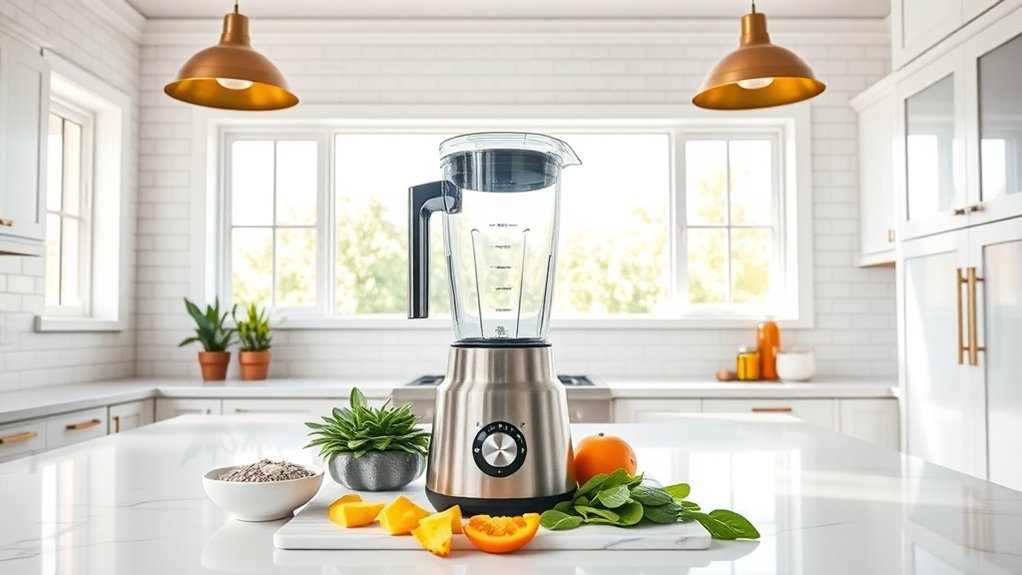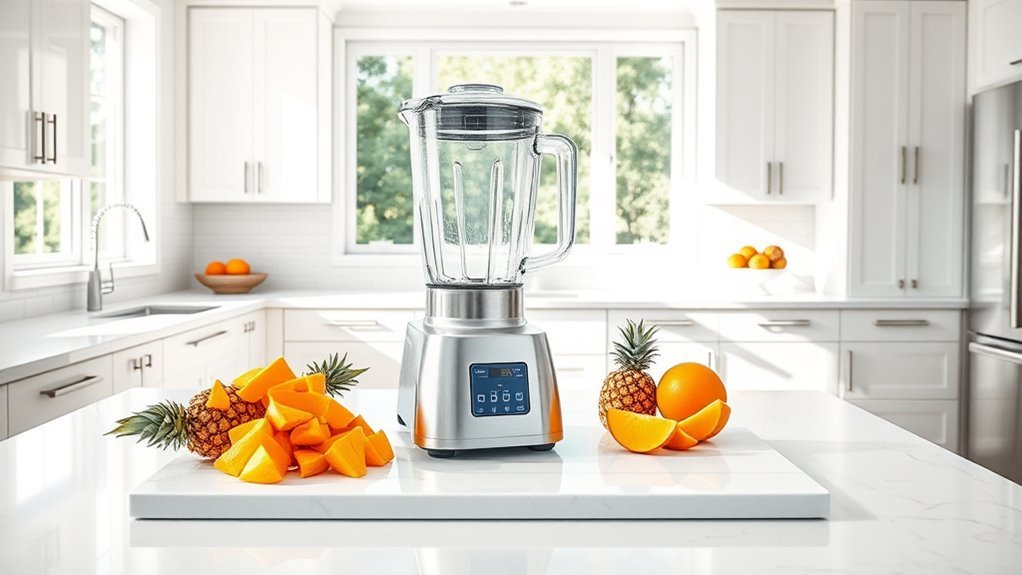The pineapple mango smoothie bowl has quietly become a breakfast staple for many health-conscious eaters, though perhaps not everyone understands why this particular combination works so well. The tropical fruits create an almost dessert-like experience that feels indulgent yet nutritious. Some might argue it’s just expensive fruit in a bowl, but there’s something about the thick, creamy texture that regular smoothies simply can’t match.
Why This Tropical Smoothie Bowl Will Become Your New Favorite

Why do some breakfast choices leave people feeling energized while others result in a mid-morning crash? This tropical smoothie bowl might be the answer many have been searching for.
The combination of pineapple and mango creates something special – perhaps it’s the natural sweetness that satisfies cravings without processed sugar. The frozen fruit provides that thick, almost ice cream-like texture that makes breakfast feel like dessert. Additionally, using a high-performance blender can enhance the texture and consistency of your smoothie bowl, making it even more enjoyable.
I think the real magic happens when you add toppings, though. It transforms a simple smoothie into something more substantial and satisfying than just drinking breakfast from a glass.
Essential Ingredients for the Perfect Pineapple Mango Bowl
Building this smoothie bowl starts with surprisingly few ingredients, though the quality of each one makes all the difference. The tropical combination relies on just five core components.
| Ingredient | Amount |
|---|---|
| Chopped pineapple | 1 cup |
| Mango | 1 cup |
| Frozen banana | 1 whole |
| Almond/coconut milk | 1 cup |
| Greek yogurt (optional) | To taste |
Fresh fruit works best, though frozen pineapple and mango are perfectly acceptable alternatives. The frozen banana acts as the backbone, creating that thick, spoonable texture that separates bowls from regular smoothies. Perhaps the milk choice matters more than expected—coconut milk adds richness while almond milk keeps things lighter.
Step-by-Step Preparation Guide for Maximum Flavor

Mastering the blending technique transforms ordinary ingredients into something that resembles premium frozen dessert.
Start by combining the pineapple, mango, and frozen banana with almond milk in your blender. The key here is patience—begin on low speed to avoid overwhelming the motor, then gradually increase to medium.
Perhaps most importantly, blend until the frozen fruit completely breaks down and creates that signature thick consistency. The mixture should hold its shape when spooned into a bowl.
I think many people rush this step, but taking an extra minute guarantees that perfect ice cream-like texture that makes smoothie bowls so satisfying. Additionally, using a high-performance blender ensures that tough ingredients are blended effortlessly for the smoothest results.
Creative Topping Ideas and Serving Suggestions
Once the smoothie base achieves that perfect thick consistency, the real creativity begins with selecting toppings that complement the tropical flavors.
Fresh fruit slices work beautifully – perhaps some kiwi rounds or strawberry pieces for color contrast. Granola adds a satisfying crunch, though sometimes the coconut flakes feel more appropriate for this particular combination.
Vibrant kiwi and strawberry slices create stunning color contrast, while coconut flakes complement tropical flavors better than traditional granola.
Cacao nibs bring an unexpected richness that balances the sweetness nicely. Chia seeds offer texture and nutrition, while chopped nuts provide protein.
I think drizzling honey creates visual appeal, but maple syrup works too. The key is layering different textures without overwhelming the delicate pineapple-mango foundation.
Frequently Asked Questions
Can I Make This Smoothie Bowl Ahead of Time and Store It?
Most people consume frozen foods within three months of freezing. One can prepare this smoothie bowl ahead by freezing individual portions in containers, though the texture becomes firmer and requires brief thawing before serving.
What’s the Best Way to Freeze Fresh Pineapple and Mango at Home?
Fresh pineapple and mango should be washed, peeled, and cut into chunks. Arrange pieces on parchment-lined baking sheets without touching. Freeze completely, then transfer to airtight containers or freezer bags.
How Many Calories Are in One Serving of This Smoothie Bowl?
While indulgent desserts pack hundreds of calories, this nutritious smoothie bowl contains approximately 250-300 calories per serving. The calorie count varies depending on milk choice and optional protein additions like Greek yogurt.
Can I Substitute Dairy Milk for Almond or Coconut Milk Beverage?
Dairy milk can substitute almond or coconut milk beverage in smoothie bowls. The substitution affects taste and nutritional content but maintains similar consistency. Regular milk provides different protein levels and flavor compared to plant-based alternatives.
Is This Smoothie Bowl Suitable for People With Diabetes or Blood Sugar Concerns?
Diabetics face 2-3 times higher heart disease risk. This smoothie bowl contains high natural sugars from three fruits totaling approximately 45-60 grams of carbohydrates, requiring careful portion control and blood glucose monitoring for diabetic individuals.
Conclusion
This smoothie bowl acts like a canvas for culinary creativity, perhaps offering more versatility than initially expected. The tropical flavors blend surprisingly well, though some might find the preparation slightly more involved than a regular smoothie. I think the visual appeal alone makes it worthwhile for those Instagram-worthy breakfast moments. The combination delivers both nutrition and satisfaction, creating something that feels indulgent yet healthy – a balance that’s admittedly hard to achieve.

